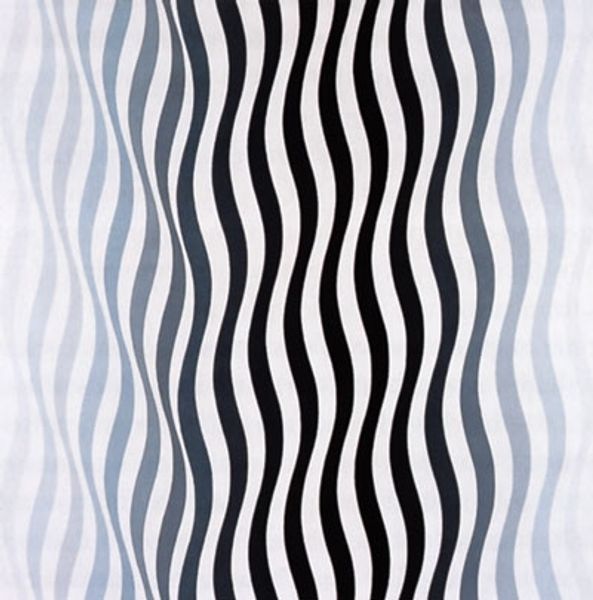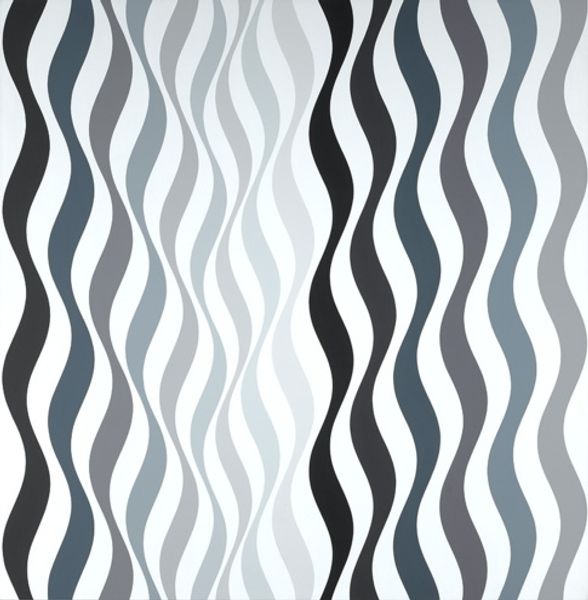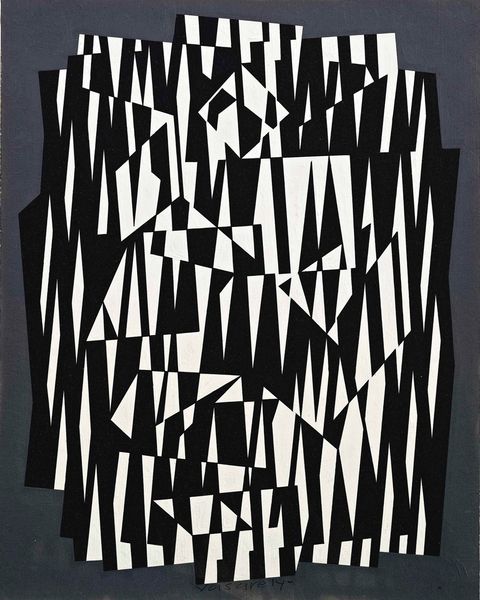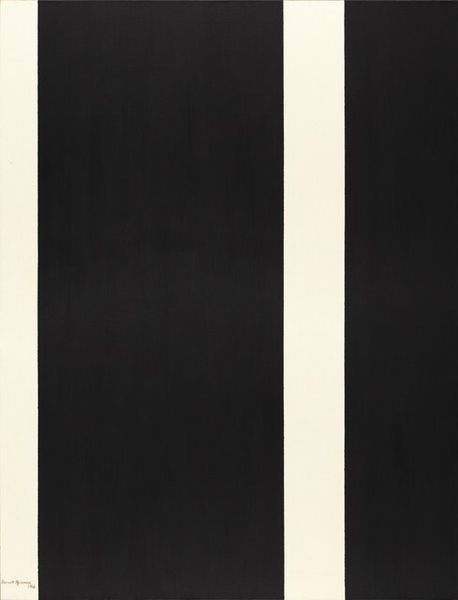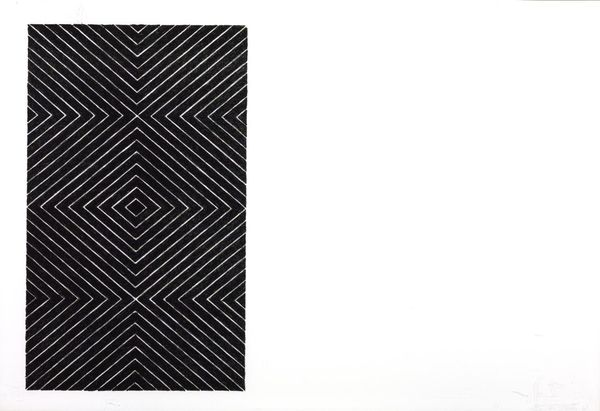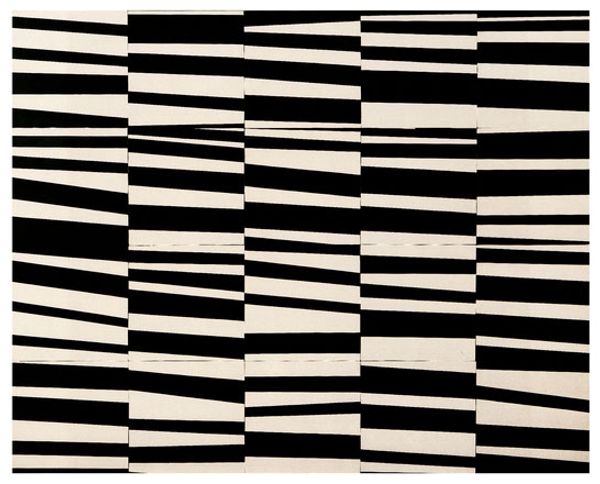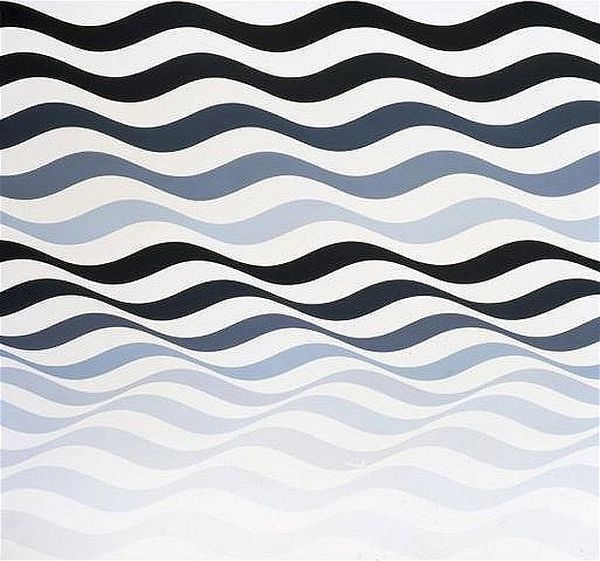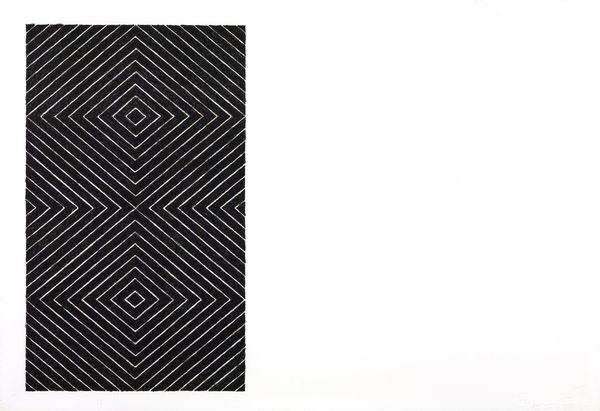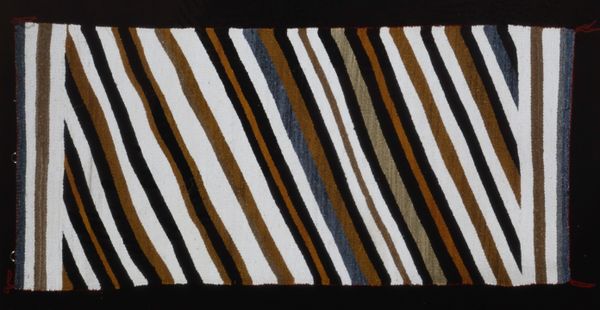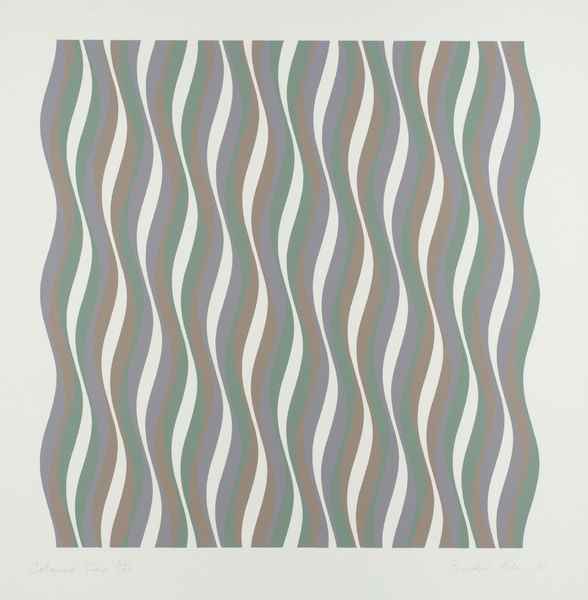
painting
#
abstract-expressionism
#
op-art
#
painting
#
pattern
#
colour-field-painting
#
geometric pattern
#
geometric
#
geometric-abstraction
#
line
#
hard-edge-painting
#
monochrome
Copyright: Bridget Riley,Fair Use
Editor: Here we have Bridget Riley's "Drift 2" from 1966, an intriguing painting of vertical, undulating lines in monochrome shades. It almost feels like the wall is breathing, a visual vibration! How do you interpret this work within its historical context? Curator: The socio-political atmosphere of the mid-1960s was one of significant upheaval. Riley’s Op Art, seemingly abstract and detached, gains resonance when viewed against this backdrop. What kind of social phenomena was going on in 1966 that are interesting? Editor: Well, there was escalating conflict in Vietnam, the rise of counter-culture, civil rights movements, the cultural exploration of psychedelics... It feels like chaos, questioning of norms. Curator: Precisely. While Riley's work avoids direct political commentary, its embrace of destabilizing perception, I believe, reflected a broader societal questioning of established order and authority. This era saw a growing awareness of how easily perception could be manipulated – consider propaganda and media influence during the Cold War. How does the very act of 'seeing' become a subject of political consideration here? Editor: So, it's not just about optical illusion, but about questioning what we're shown, how we interpret reality? Curator: Exactly. Riley, intentionally or not, created a visual experience that disrupts the passive consumption of imagery, encouraging viewers to actively engage with the act of seeing. The popularity of Op Art also intersected with the rise of consumer culture; these works became easily reproduced on textiles and in advertising. This brings to the fore discussions of the commodification of art. Is that an embrace of popular appeal or a loss of artistic intent, in your view? Editor: I think it’s a complex push and pull. There’s accessibility, sure, but maybe also a dilution of its power. Thinking about it, I see how Op Art became this wider cultural phenomenon – it makes sense historically. Thanks for the insight. Curator: Indeed. Examining how art reflects, refracts, and participates in the historical currents can reveal fascinating dimensions beyond the purely visual.
Comments
No comments
Be the first to comment and join the conversation on the ultimate creative platform.
